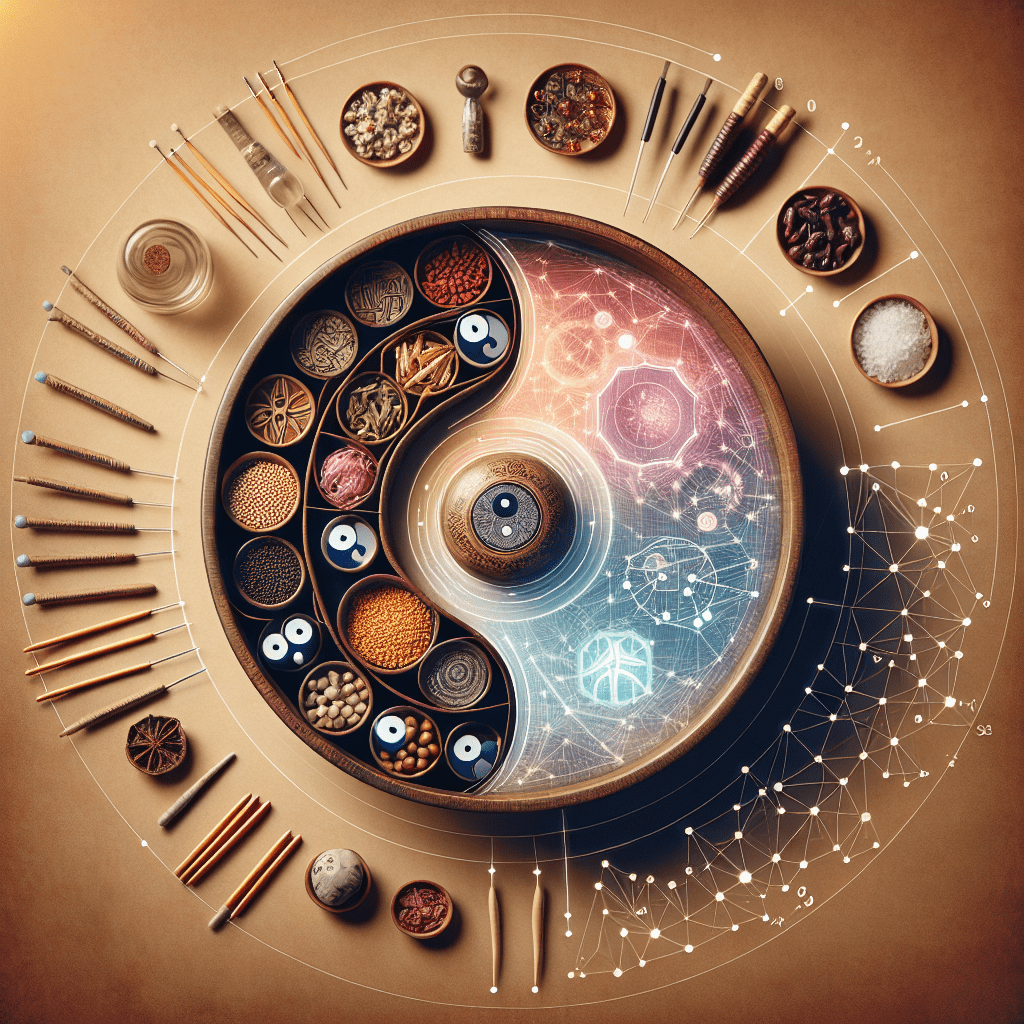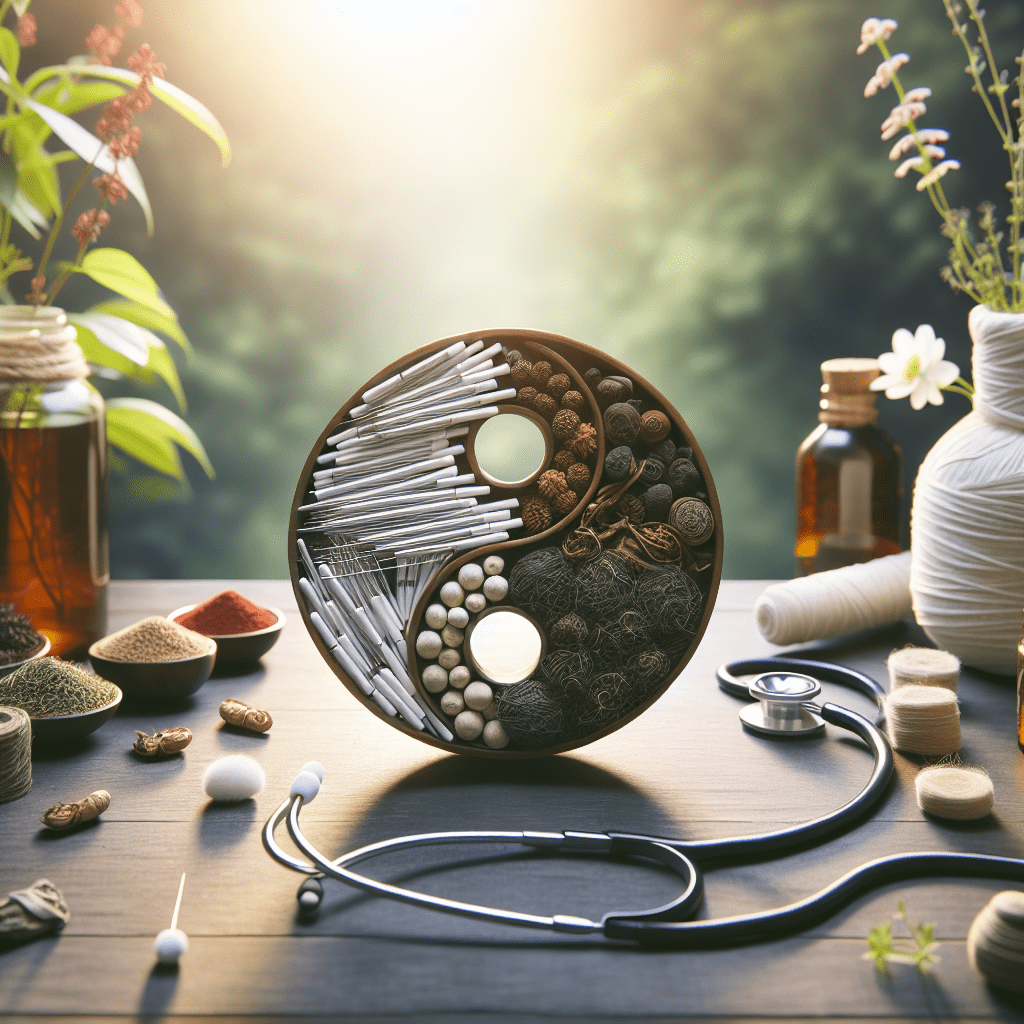In a world where modern medicine often focuses on treating symptoms rather than addressing root causes, many health-conscious individuals are turning to ancient practices for holistic wellness solutions. Chinese herbal medicine, with its remarkable 2,000-year history, offers precisely this approach—a time-tested system that views health as a delicate balance between body, mind, and environment.
Dating back to at least 200 BCE with the compilation of the Huangdi Neijing (Yellow Emperor’s Classic of Medicine), Chinese herbal medicine represents one of humanity’s oldest and most sophisticated healing traditions. Unlike quick-fix remedies, this ancient practice focuses on restoring harmony within the body, aligning perfectly with our growing desire for natural, sustainable approaches to health.
At its core, Chinese herbal medicine embodies the principle that true wellness comes from balance—a philosophy that resonates deeply in our often hectic, imbalanced modern lives. This ancient wisdom doesn’t just treat illness; it nurtures vitality, strengthens resilience, and promotes longevity through carefully crafted herbal formulations that address the unique constitution of each person.
The Philosophical Foundations of Chinese Herbal Medicine
The brilliance of Chinese herbal medicine lies in its comprehensive understanding of human health through several interconnected principles. These foundational concepts have guided practitioners for millennia and continue to offer valuable insights for modern wellness.
The Holistic Approach: Seeing the Complete Picture
Unlike the compartmentalized view often taken in Western medicine, Chinese herbal medicine sees the body as an integrated whole. Dr. Li Chen, a respected TCM practitioner, explains: “In Chinese herbal medicine, we never just treat the headache or the stomach pain. We look at sleep patterns, emotional state, diet, and even the patient’s environment to understand the true nature of imbalance.”
This holistic perspective means that two people with identical symptoms might receive completely different herbal formulas based on their unique constitutions—a personalized approach that modern medicine is only beginning to embrace.
Yin and Yang: The Dance of Opposites
Perhaps the most recognizable concept in Chinese medicine is Yin and Yang—complementary forces that exist in perpetual dynamic balance. Yin represents the cooling, nourishing, and restful aspects of life, while Yang embodies warmth, activity, and transformation.
Think of Yin and Yang as the rhythm of your day—the restful night (Yin) balancing the active day (Yang), or the calm recovery period (Yin) after intense exercise (Yang). Chinese herbal medicine aims to harmonize these forces when they fall out of balance.
For example, someone experiencing night sweats, insomnia, and irritability might be diagnosed with “Yin deficiency with heat.” The prescribed herbal formula would focus on nourishing Yin energy with cooling herbs like American ginseng, ophiopogon root, or lily bulb to restore balance.
Five Elements Theory: Nature’s Patterns Within Us
The Five Elements theory—Wood, Fire, Earth, Metal, and Water—provides another lens through which Chinese herbal medicine understands health. Each element corresponds to specific organs, emotions, seasons, and even flavors, creating an intricate map of relationships within the body.
As Dr. Wang Tao, author of “Modern Applications of Traditional Wisdom,” notes: “The Five Elements aren’t just abstract concepts—they’re observable patterns that connect our internal organs with natural cycles. When we understand these connections, we can use herbs strategically to support the body’s natural rhythms.”
For instance, the Wood element relates to the liver and gallbladder, corresponds to spring, and is associated with the emotion of anger. A person with Wood imbalance might experience irritability, headaches, and tendon problems. Chinese herbal formulas like Xiao Yao San (Free and Easy Wanderer) help soothe the liver, using herbs like bupleurum root, white peony, and peppermint to restore harmony to the Wood element.
The Art and Science of Chinese Herbal Formulations
One of the most remarkable aspects of Chinese herbal medicine is its sophisticated approach to herbal formulation. Unlike many Western herbal practices that focus on single herbs for specific symptoms, Chinese medicine typically uses complex formulas with multiple herbs working in concert.
Complex Formulas: Orchestrating Healing Harmony
A traditional Chinese herbal formula may contain anywhere from 4 to 20 different herbs, each playing a specific role in the overall therapeutic effect. This complexity isn’t random—it’s a carefully orchestrated approach developed over centuries of clinical observation.
Every formula contains:
- Chief herbs that address the primary health concern
- Deputy herbs that enhance the chief herb’s action or address secondary symptoms
- Assistant herbs that moderate or eliminate potential side effects
- Envoy herbs that guide the formula to specific areas of the body or harmonize the entire prescription
This sophisticated approach allows for remarkable precision in addressing complex health conditions while minimizing side effects. Research published in the Journal of Ethnopharmacology has shown that these herb combinations often produce synergistic effects greater than the sum of their parts.
Common Herbs and Their Benefits
The Chinese herbal medicine pharmacopeia includes thousands of substances, each with specific properties and affinities. Here are just a few commonly used herbs:
Astragalus (Huang Qi): Strengthens the immune system, supports energy levels, and promotes tissue repair. Modern research confirms its impressive immunomodulating properties.
Goji Berry (Gou Qi Zi): Nourishes the liver and kidneys, improves vision, and supports blood production. Rich in antioxidants, these berries have become popular in Western superfood circles.
Reishi Mushroom (Ling Zhi): Calms the spirit, supports the heart, and enhances immune function. Studies show it has remarkable anti-inflammatory and anti-cancer potential.
Schisandra Berry (Wu Wei Zi): Known as the “five-flavor berry,” it supports liver function, improves mental clarity, and enhances physical endurance. Its adaptogenic properties help the body respond to stress.
Licorice Root (Gan Cao): Often used as a harmonizing agent in formulas, it soothes digestive irritation, supports adrenal function, and moderates the effects of stronger herbs.
When these herbs are combined in formulas like Yu Ping Feng San (Jade Windscreen Powder) for immune support or Gui Pi Tang (Restore the Spleen Decoction) for fatigue and anxiety, they become powerful tools for restoring balance to the body’s systems.
Clinical Applications and Modern Research
While Chinese herbal medicine has been validated through millennia of clinical experience, modern scientific research is increasingly confirming its effectiveness for various health conditions.
Evidence-Based Applications
Research studies have demonstrated the efficacy of Chinese herbal medicine for numerous conditions:
Digestive Disorders: A 2019 systematic review in the Journal of Gastroenterology found that Chinese herbal formulas like Xiao Yao San significantly improved symptoms in patients with functional dyspepsia compared to conventional medications, with fewer side effects.
Respiratory Conditions: During the COVID-19 pandemic, Chinese herbal formulas like Qing Fei Pai Du Tang were incorporated into treatment protocols in China, with observational studies suggesting reduced symptom severity and hospital stays.
Women’s Health: Formulas like Xiao Yao San and Jia Wei Xiao Yao San have shown effectiveness for premenstrual syndrome and perimenopausal symptoms in multiple clinical trials, addressing both physical symptoms and mood disturbances.
Stress and Mental Health: A 2020 study in the Journal of Affective Disorders demonstrated that the formula Gan Mai Da Zao Tang significantly reduced anxiety symptoms compared to placebo, supporting its traditional use for emotional balance.
Inflammatory Conditions: Research published in Evidence-Based Complementary and Alternative Medicine found that herbal formulas containing herbs like turmeric, licorice, and peony root significantly reduced inflammatory markers in patients with rheumatoid arthritis.
Complementing Modern Lifestyles
Chinese herbal medicine’s emphasis on balance and personalization makes it remarkably adaptable to modern life. Many formulas have been specifically designed to address conditions exacerbated by contemporary lifestyles:
For the digital eye strain and insomnia associated with excessive screen time, formulas like Qi Ju Di Huang Wan support eye health and promote restful sleep.
For stress-related digestive issues common in high-pressure work environments, formulas like Liu Jun Zi Tang restore healthy digestion and boost energy.
For seasonal allergies worsened by pollution, formulas like Bi Yan Pian clear nasal passages and strengthen the body’s resistance to environmental triggers.
Food as Medicine: The Seamless Connection
One of the most practical aspects of Chinese herbal medicine is its integration with everyday nutrition. Many common foods are considered medicinal in the Chinese tradition, blurring the line between cooking and healing.
As nutritional therapist Emma Chen explains: “In Chinese medicine, there’s no strict division between food and medicine. Your breakfast congee with goji berries and ginger isn’t just a meal—it’s supporting your spleen energy and warming your digestive system.”
This “food as medicine” approach offers accessible entry points to Chinese herbal medicine through simple kitchen remedies:
- Ginger tea for nausea and cold symptoms
- Chrysanthemum tea for cooling summer heat
- Lotus root soup for strengthening the lungs
- Black sesame seeds for nourishing hair and relieving constipation
By incorporating these principles into daily eating habits, people can experience the foundational benefits of Chinese herbal medicine without specialized knowledge.
Ancient Wisdom Meets Modern Technology
The brilliance of Chinese herbal medicine lies in its adaptability—it has evolved continuously throughout its long history while maintaining its core principles. Today, we stand at an exciting intersection where ancient wisdom meets cutting-edge technology.
Modern approaches like EASTCHI AI represent the next evolution in this tradition, using artificial intelligence to analyze individual constitutions according to Five Element Theory and recommend personalized herbal formulations. This technology doesn’t replace the human expertise developed over generations—it amplifies it, making this sophisticated medical system more accessible to people worldwide.
By analyzing thousands of classical texts and modern research studies, AI systems can identify patterns and relationships between symptoms, constitutional types, and effective herbal formulas that might take a human practitioner decades to master. This marriage of ancient wisdom and modern technology offers unprecedented personalization in health recommendations.
As Dr. James Chen, a researcher at the intersection of AI and traditional medicine, observes: “What’s remarkable about Chinese herbal medicine is that its fundamental principles—personalization, balance, and treating root causes—align perfectly with the direction modern medicine is heading. The difference is that Chinese medicine has been refining this approach for two millennia.”
Embracing Balance in the Modern World
In our fast-paced, often disconnected modern lives, Chinese herbal medicine offers more than just remedies for specific ailments—it provides a comprehensive framework for understanding health as a state of dynamic balance. This perspective empowers us to take an active role in maintaining our wellness rather than merely treating illness when it arises.
The 2,000-year journey of Chinese herbal medicine demonstrates that true healing wisdom transcends time. Its emphasis on harmony between body systems, between person and environment, and between treatment and prevention offers a holistic vision of health that’s increasingly relevant in our complex world.
Whether you’re exploring herbal teas for better sleep, incorporating adaptogenic herbs into your daily routine, or seeking personalized recommendations through advanced systems like EASTCHI AI, the principles of Chinese herbal medicine offer a profound yet practical path to natural balance.
By embracing this ancient wisdom and its modern applications, we connect with a lineage of healing knowledge that has supported countless generations—and now stands ready to support our wellness journey in the 21st century.




